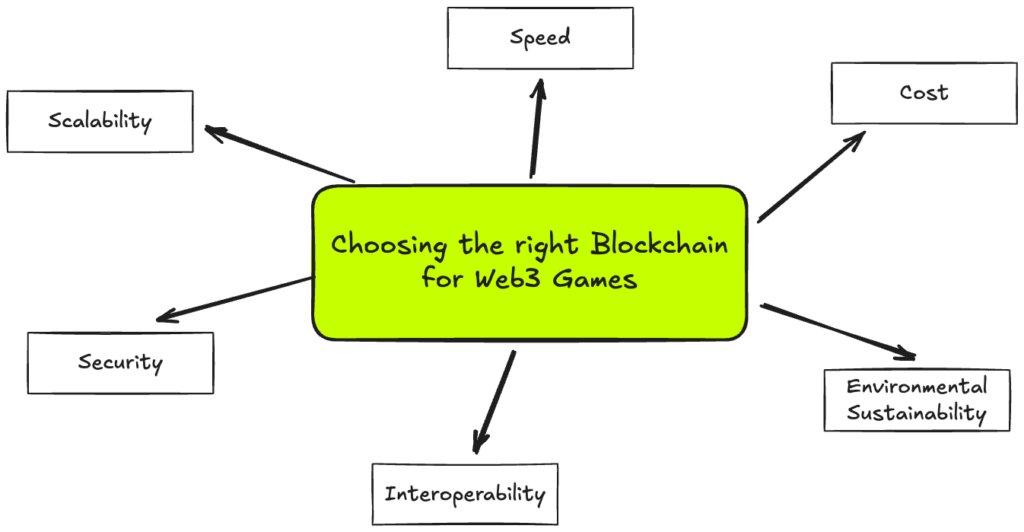Hookup Check: Your Ultimate Dating Resource
Explore insights, tips, and advice for modern relationships and hookups.
Jumping Worlds: How Crypto Game Interoperability is Changing the Player Experience
Discover how crypto game interoperability is revolutionizing player experiences. Jump between worlds and unlock endless possibilities!
Exploring Crypto Game Interoperability: What It Means for Players
As the world of crypto gaming continues to evolve, interoperability stands out as a vital concept for players and developers alike. Crypto game interoperability refers to the ability of different gaming platforms and ecosystems to interact seamlessly, allowing players to transfer in-game assets, characters, and achievements across various games and blockchains. This feature not only enhances the gaming experience by giving players more freedom and control over their assets but also creates a vibrant economy where assets can gain value based on their utility across multiple games.
For players, the implications of interoperability are profound. Imagine being able to use the unique skins you earned in one game within another, or trading characters between games, thereby increasing their usefulness. Additionally, crypto game interoperability has the potential to reduce fragmentation in the gaming community, encouraging collaboration between developers and fostering a more cohesive gaming culture. As technology progresses and more games adopt blockchain, the promise of a unified gaming experience will become increasingly attainable, marking a significant shift in player engagement and asset management.

Counter-Strike is a highly competitive first-person shooter game that has been a staple in the esports community for years. Players compete in various modes, either as terrorists or counter-terrorists, to complete objectives or eliminate opponents. To enhance your gaming experience, you might want to check out the bc.game promo code for some exciting offers.
How Jumping Between Worlds Enhances Your Gaming Experience
Jumping Between Worlds is an exhilarating feature that enhances the gaming experience by allowing players to explore diverse environments and narratives. This mechanic fosters creativity, as gamers can switch from a fantasy realm to a futuristic city within seconds. The contrast between world designs not only keeps players engaged but also challenges their problem-solving skills as they adapt to new rules and gameplay mechanics. For example, a player might need to master stealth in a dark medieval world while employing advanced technology in a sci-fi setting. This constant switching can lead to a richer, more immersive gaming experience.
Furthermore, jumping between worlds encourages social interactions and community-building among players. Many games offer multiplayer modes where friends can join in different realms, sharing experiences and strategies. This connectivity can be crucial for enhancing the overall enjoyment of the game. By discussing different worlds, players can uncover hidden secrets, share tips, and even collaborate on challenges unique to each environment. The social aspect is amplified through platforms like Twitch or Discord, where gamers can gather and reflect on their adventures in multiple worlds, thereby fostering a sense of belonging and camaraderie.
The Future of Gaming: Can Interoperable Crypto Games Create a Unified Metaverse?
The future of gaming is rapidly evolving, and one of the most intriguing developments is the potential for interoperable crypto games to foster a unified metaverse. This concept envisions a virtual space where players can seamlessly transition between various games, carrying their digital assets and achievements with them. By leveraging blockchain technology, developers can create a shared environment where assets such as skins, characters, and in-game items are not confined to a single game, but instead possess value across multiple platforms. This interoperability not only enhances the player experience but also encourages a vibrant economy, as gamers can buy, sell, or trade their items freely.
However, the realization of a unified metaverse faces several challenges. Issues of compatibility, regulatory compliance, and standardization must be addressed before a seamless experience can become reality. Additionally, the sustainability of such an ecosystem relies on robust partnerships between game developers, platforms, and the gaming community. As we delve into this new era, it becomes essential for stakeholders to collaborate and establish frameworks that allow for equitable play, ensuring that the dream of an interoperable metaverse becomes an inclusive reality for all gamers.